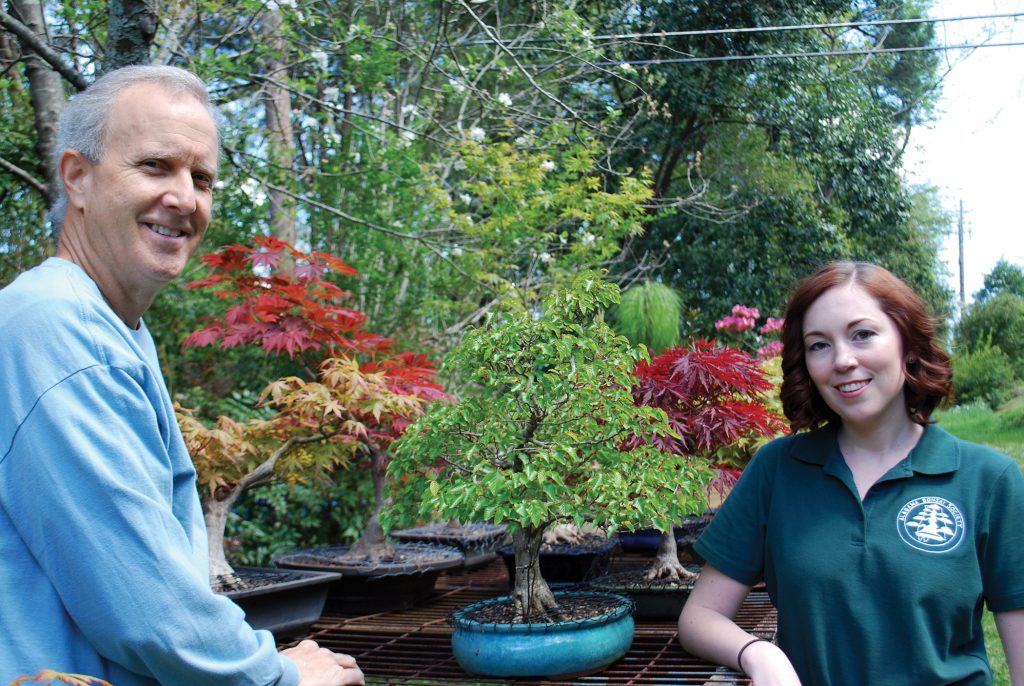
Every plant has a story. Bonsai trees, however, have at least two.
So says Alabama Bonsai Society President Doug Unkenholz of Homewood, Ala., who, like many of his fellow bonsai growers, is as passionate about creating these diminutive works of botanical art as he is about sharing their stories.
According to Unkenholz, the first story every bonsai tells is the account of what each grower has done to create the plant’s unique beauty and style, a story that typically spans decades. “The other story is about what each tree hopefully imitates in nature,” Unkenholz says.
Imitating nature — or more precisely capturing a scene from nature in a miniature tableau — has been the primary goal of bonsai growers for thousands of years. The practice began in China around 700 AD when the elite of Chinese society began collecting specimens of trees and, using meticulous pruning and cultivation techniques, created living small-scale replicas of the trees each representing the spiritual and magical qualities of nature. When the method spread to Japan, it evolved into the art of bonsai, a Japanese term that means “a tree planted in a shallow container,” a horticultural art rooted in the meditative rituals and beliefs of Zen Buddhism.
Those same techniques are still used today by bonsai masters and amateur bonsai growers alike who spend years creating what Unkenholz described as “the illusion of a mature tree.” This is accomplished by pruning the roots and twigs of a normal-sized tree or shrub (not a special dwarf or miniaturized variety) to limit its size (typically no more than four feet in height) and sculpt its shape and form.
Any branching, small-leafed woody plants (jade plants, azaleas, Japanese maples, beeches and short-needled pines to name a few) can be used to create bonsai trees. Aside from their diminutive size, what sets bonsais apart from other sculpted plants is that they are grown outside but in containers (a similar tree grown in the ground is called a “niwaki”). Those containers, which are filled with a specialized growing media (usually an inorganic substrate such as perlite, lava rocks or even kitty litter), are essential to the art and story of each plant and are chosen to complement the plant’s aesthetics. In addition, stones, mosses, driftwood and other ornamental elements are often added to the display to further the chosen motif.
Though the process may sound daunting, growing bonsai is not so much difficult — according to Unkenholz all you need is a seedling, a vision and plenty of patience — as it is a long-term commitment. Each plant requires years of careful pruning, shaping and attention to their water, light and nutrient needs before their inner bonsai shape emerges. And, because they are a form of living art, bonsai trees are never finished. But helping write and then constantly revise a bonsai’s story is well worth the effort and is a process that Unkenholz said can be relaxing, meditative and extremely gratifying. “It makes me feel closer to nature,” he says.
If the idea of creating a bonsai story appeals to you, lots of resources are available. One is the ABS’s upcoming annual spring show, planned for May 14-15 at the Birmingham Botanical Gardens’ auditorium. This event offers a chance to see (and buy) a stunning array of bonsai plants, containers, tools, and soil mixtures as well as mingle with bonsai growers and see live demonstrations by a bonsai master. (For more information about the show, search AlabamaBonsaiSociety on Facebook.)
The ABS, which is based in Birmingham, also hosts monthly meetings and occasional workshops for its members as do Alabama’s two other bonsai organizations, The Living Art Bonsai Society in the Huntsville/Decatur area or the Azalea City Bonsai Society based in Mobile.
Katie Jackson is a freelance writer and editor based in Opelika, Alabama. Contact her at [email protected].




